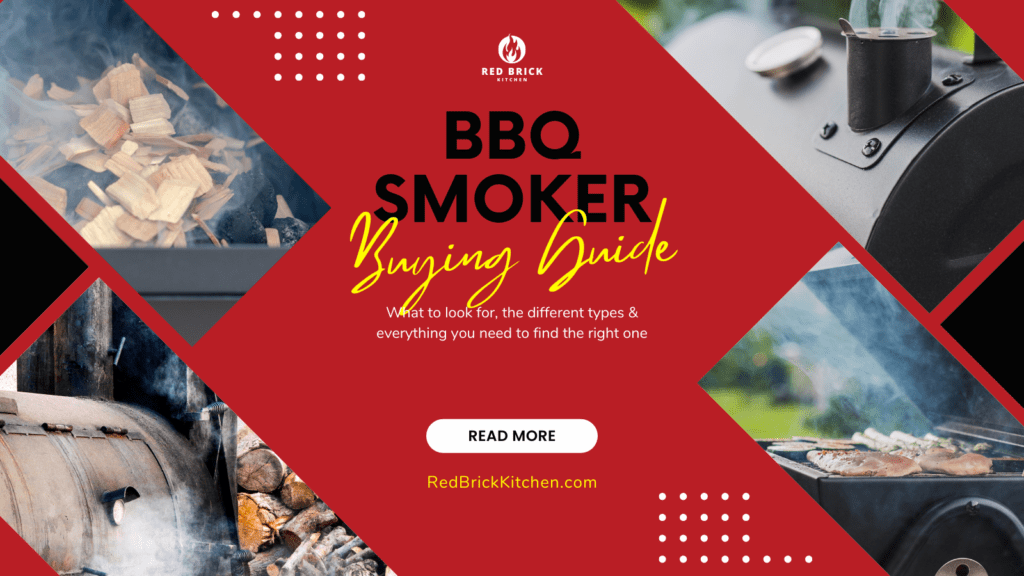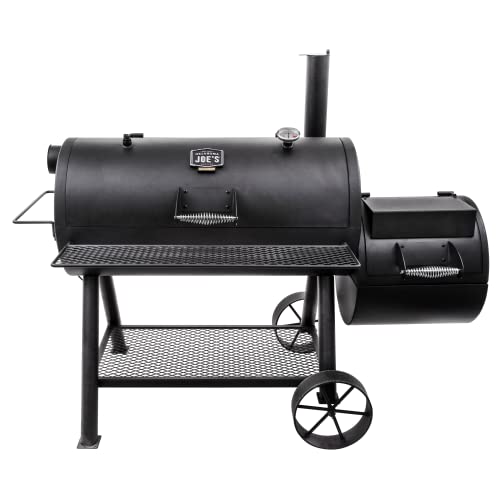If you’re a barbecue enthusiast or just someone who appreciates the mouthwatering flavors of smoked meat, then investing in a BBQ smoker is a decision you won’t regret. BBQ smokers come in various shapes, sizes, and fuel types, and choosing the right one can be daunting. With our expert guidance, however, you’ll find that buying a BBQ smoker is as easy as dialing in temperatures on a pellet or electric smoker.
Key Takeaways
Here are the key takeaways when buying a BBQ smoker:
- Fuel Types: Choose from electric, charcoal, gas, or pellet smokers, each offering distinct advantages in terms of convenience and flavor.
- Smoker Types: Consider the design of your smoker, whether it’s offset, vertical, or unconventional, to match your preferences and needs.
- Configuration: Decide between freestanding and built-in smokers, depending on mobility and integration into your outdoor kitchen.
- Smoker Classes: Select a smoker class (luxury, premium, practical, or entry-level) based on your budget and desired features.
- Key Considerations: Pay attention to insulation, airflow and temperature control, wood chip usage, water pans, and your specific smoking goals to make an informed choice.
Choosing Your Smoker’s Fuel Type
Electric BBQ Smokers

Electric BBQ smokers are the epitome of convenience. These set-it-and-forget-it models come equipped with thermostats that precisely control the temperature in your cooking chamber, much like an indoor oven. Lower-end electric smokers rely on rheostats to adjust electrical flow to the heat-source coil, which burns wood chips in a nearby smoker box to produce smoke. The minimal airflow in electric smokers makes them ideal for dishes like smoked chicken or turkey, ensuring juicy and tender results. Electric smokers are an excellent choice if ease of use is your priority.
Charcoal BBQ Smokers
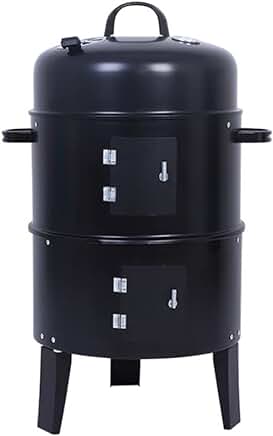
Many prefer Charcoal smokers for the rich, smoky flavor they impart to the meat. They behave similarly to wood-burning smokers but have a steeper learning curve. Tending charcoal smokers involves monitoring fuel and smoke levels, but most can quickly develop this skill with some practice. You can enhance the flavor by adding wood chips or chunks directly on top of the lump charcoal in the firebox. Some models even have smoker temperature controllers to help you adjust airflow for a smoother smoking experience. If you value flavor and are willing to put in a little effort, charcoal smokers are a fantastic option.
Gas BBQ Smokers
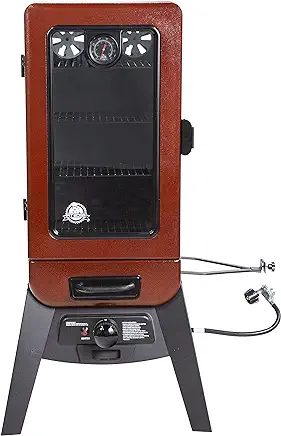
Gas BBQ smokers offer the same ease of use as electric models. They are usually vertically designed, with a gas burner at the bottom of the smoking chamber. Gas burners provide stable heat, quickly igniting wood chips or chunks and making it simpler to control temperature and smoke than wood or charcoal smokers. When using a gas smoker, your main concerns are time and your food’s internal temperature. Gas smokers maintain the tenderness and smoky flavor of the meat, and if they have air vents for controlling airflow, it’s advisable to keep them open during use to prevent soot buildup.
Pellet BBQ Smokers
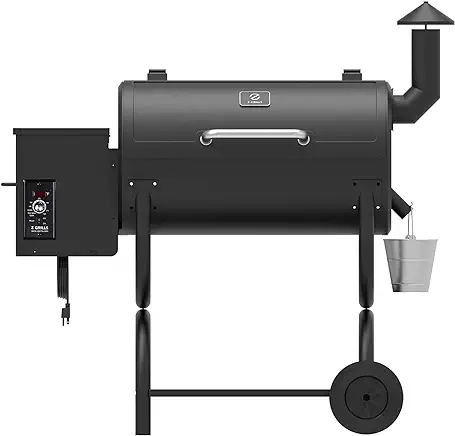
Pellet smokers are the pinnacle of user-friendliness. They handle everything from managing fuel and heat levels to regulating smoke and airflow. Some models even have programmable cooking cycles, ensuring consistently perfect BBQ with just the push of a button. Pellet smokers create their own flavored smoke, eliminating the need for wood chips or chunks. The mild and subtle flavors they produce make it nearly impossible to smoke your food too much. You can adjust the intensity of smoke by controlling the fire’s heat. Pellet smokers are perfect for those who seek a hassle-free smoking experience.
Choosing Your BBQ Smoker Type
Offset Smokers
With their horizontal barrel-shaped bodies, offset smokers are a favorite among barbecue purists and competitors. They use charcoal or wood to produce heat and smoke, which wafts from the firebox into the cooking chamber. While they require attention and effort, especially in tending the fire, modern offset smokers feature temperature controllers and other innovations that make the process more manageable. They are ideal for those who appreciate the traditional art of smoking and are willing to put in the effort for exceptional results.
Vertical Smokers
Vertical smokers position the heat source directly below the main cooking chamber. This design ensures even temperatures and ease of management, as heat and smoke naturally rise toward your food. Vertical smokers are available in various fuel types, including electric, charcoal, pellet, and gas. These smokers are known for their consistent performance and are suitable for both beginners and experienced smokers.
Unconventional Smokers
Unconventional smokers need to fit neatly into the horizontal or vertical categories. They have unique constructions and features that set them apart from traditional smokers. These smokers are perfect for those looking for something different and are willing to experiment with various smoking methods.
Choosing Your Smoker’s Configuration
Freestanding Barbecue Smokers
Freestanding smokers are the most common configuration. They offer mobility, making it easy to move around the backyard or take to competitions. Freestanding smokers are also easier to clean, thanks to their mobility, which allows you to access all angles for cleaning. They are popular for traveling competition smokers and are easy to store when not in use.
Built-In Barbecue Smokers
Built-in smoker designs can be integrated into outdoor kitchens, adding versatility and an attractive aesthetic appeal. Pairing a BBQ smoker with a conventional gas grill allows you to offer your guests a wider variety of food. Some vertical electric smokers on wheels can slide directly into a counter cutout with proper ventilation. Even freestanding cabinet smokers can be built into BBQ islands with the proper ventilation and clearance.
Choosing Your BBQ Smoker Class
Luxury Barbecue Smokers
Luxury smokers are built from high-quality materials like 304 stainless steel, ensuring extreme longevity. They come with lifetime warranties from trusted brands, offering peace of mind. These smokers feature sealed cooking chambers and thick insulation to retain smoke and heat effectively. Luxury smokers provide versatile cooking systems and convenient features for a top-tier smoking experience.
Premium Barbecue Smokers
Premium smokers are constructed from stainless steel or powder-coated steel for durability. They come with solid warranties, often protecting your investment for up to 10 years. These smokers offer dependable cooking systems and quality insulation for consistently delicious BBQs. Some premium electric smokers even feature digital control centers, making smoking simple and precise.
Practical Barbecue Smokers
Practical smokers are budget-friendly and easy to use. They come in various fuel types and offer moderate warranties that reflect the quality of mixed materials used in their construction. These smokers feature fairly thick steel for heat retention and simple analog controls. Practical smokers have unique cooking systems and helpful features that set them apart from entry-level models.
Entry-Level Barbecue Smokers
Entry-level smokers are designed to meet a specific low price point. They often have thinner materials of lower quality, resulting in limited warranties. These smokers are straightforward and lack advanced features for easy and versatile cooking. Weber Smokey Mountain stands out as a reliable option in this class.
Final Considerations When Buying a Smoker
Look for a smoker with great insulation.
Effective insulation is crucial for heat and smoke retention in low-and-slow smoking. Smokers with well-designed fiberglass mesh or felt gaskets and flanged lips provide excellent insulation, especially in cold climates. Thick-gauge metal helps absorb and radiate heat back toward your food, enhancing the smoking process. Pay attention to seals or gaskets in the smoker body to prevent smoke from escaping and ensure efficient fuel usage.
Airflow & Temperature
Temperature regulation is essential for great barbecue and especially critical for smokers. Different smokers use various systems to control airflow and temperature. Charcoal and kamado smokers rely on dampers or vents to adjust airflow through the cooking chamber, while electric and gas smokers may also have damper systems. Ensuring these components are easily accessible, simple to operate, and made from durable materials is vital for maintaining consistent temperature control.
Wood Chips & Chunks
The choice between wood chips and wood chunks affects the intensity and duration of smoke flavor. Use wood chips for heavy smoke flavor during relatively short cooks and wood chunks for a steady stream of smoke flavor over longer cooks. Experimenting with different hardwood species can yield varied flavors in your food. Soaking wood chips or chunks is generally unnecessary, as it only extends the time it takes to ignite.
Water Pans & Water Smokers
Water pans play a vital role in maintaining humidity and temperature stability in smokers. While you can use water pans for adding unique flavors to your food, water alone is sufficient for their function. They create high humidity levels inside the smoker, preventing your food from drying out in the hot, dry smoking environment. Water pans act as deflectors, absorbing and radiating heat to even out temperature fluctuations. While not mandatory, using a water pan can significantly improve your smoking results.
Conclusion
Selecting the perfect BBQ smoker requires careful consideration of your preferences, experience level, and smoking goals. Whether you opt for the traditional charm of charcoal smokers, the convenience of electric or gas smokers, or the simplicity of pellet smokers, your choice will ultimately depend on your unique barbecue journey. Remember to pay attention to fuel type, smoker type, configuration, and class when deciding. With the right smoker by your side, you’ll be well on your way to creating mouthwatering smoked masterpieces that will delight your taste buds and impress your guests. Happy smoking!
FAQs to Consider When Buying a BBQ Smoker
What are the different fuel types for BBQ smokers?
The fuel types for BBQ smokers, include electricity, charcoal, gas, and pellet smokers. Each of these options has its own set of benefits and considerations.
What are the main types of BBQ smokers based on their design?
The main types of BBQ smokers are offset smokers, vertical smokers, and unconventional smokers. Each type has its unique characteristics and advantages.
What should I consider when choosing between freestanding and built-in BBQ smokers?
When deciding between freestanding and built-in BBQ smokers, consider factors such as mobility, ease of cleaning, storage, and integration into your outdoor kitchen setup.
How do I determine which BBQ smoker class is suitable for my needs?
Their are four BBQ smoker classes: luxury, premium, practical, and entry-level. Your choice should be based on factors like budget, desired features, and the level of performance you’re looking for.
What are some critical considerations for buying a BBQ smoker to achieve the best results?
To make an informed decision when buying a BBQ smoker, consider factors such as insulation, airflow and temperature control, wood chip usage, water pans, and your specific smoking goals.
Last updated: September 29, 2023
This page may contain affiliate links / Images from Amazon Product Advertising API

